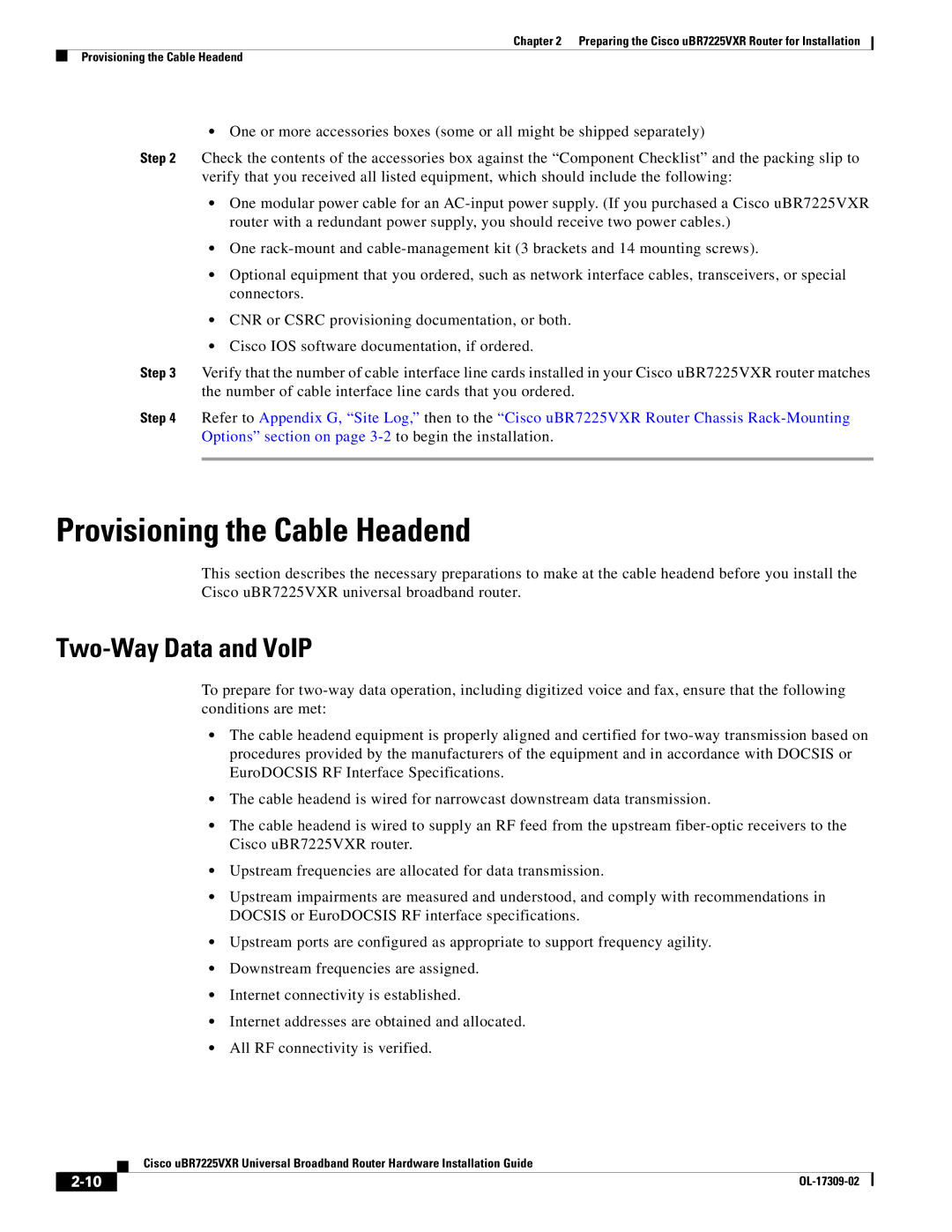
Chapter 2 Preparing the Cisco uBR7225VXR Router for Installation
Provisioning the Cable Headend
•One or more accessories boxes (some or all might be shipped separately)
Step 2 Check the contents of the accessories box against the “Component Checklist” and the packing slip to verify that you received all listed equipment, which should include the following:
•One modular power cable for an
•One
•Optional equipment that you ordered, such as network interface cables, transceivers, or special connectors.
•CNR or CSRC provisioning documentation, or both.
•Cisco IOS software documentation, if ordered.
Step 3 Verify that the number of cable interface line cards installed in your Cisco uBR7225VXR router matches the number of cable interface line cards that you ordered.
Step 4 Refer to Appendix G, “Site Log,” then to the “Cisco uBR7225VXR Router Chassis
Provisioning the Cable Headend
This section describes the necessary preparations to make at the cable headend before you install the Cisco uBR7225VXR universal broadband router.
Two-Way Data and VoIP
To prepare for
•The cable headend equipment is properly aligned and certified for
•The cable headend is wired for narrowcast downstream data transmission.
•The cable headend is wired to supply an RF feed from the upstream
•Upstream frequencies are allocated for data transmission.
•Upstream impairments are measured and understood, and comply with recommendations in DOCSIS or EuroDOCSIS RF interface specifications.
•Upstream ports are configured as appropriate to support frequency agility.
•Downstream frequencies are assigned.
•Internet connectivity is established.
•Internet addresses are obtained and allocated.
•All RF connectivity is verified.
| Cisco uBR7225VXR Universal Broadband Router Hardware Installation Guide |
|
